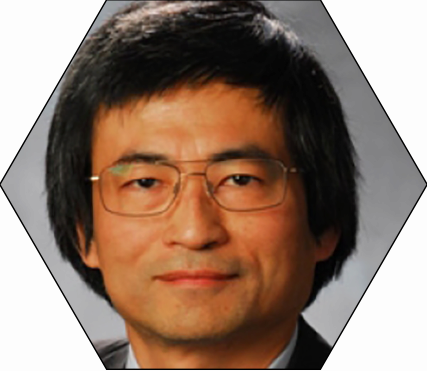Education
- Ph.D., Cornell University, 1989
- M.Phil., University of Hong Kong, 1984
- B.Sc. (Eng.), University of Hong Kong, 1980
Background
Dr. Yeung joined Georgia Tech as an Assistant Professor of Aerospace Engineering in 1992. Prior to that he was a postdoctoral research associate at The Pennsylvania State University.
Research
- Fluid Mechanics: Fluid dynamics, turbulence, mixing, dispersion, and high-performance computing.
Dr. Yeung's research activities are mainly in two areas:
Turbulence: Structure, Mixing, and Dispersion
Dr. Yeung is interested in fundamental studies that provide advances in understanding the complex behavior of turbulent fluid flows, with emphsis on turbulence at high Reynolds number, which is characterized by the presence of disorderly fluctuations over a wide range of scale sizes in both time and space. Specific topics include the statistical description of extreme fluctuations in local strain and rotation rates, mixing of passively transported substances over a range of molecular diffusivities, and the dispersion of multiple fluid elements which is the basic mechanism behind contaminant dispersion in the environment.
The primary approach employed is direct numerical simulation based on exact conservation laws, followed by post-processing of large volumes of archival data to obtain quantities not easily available in experiments. Collaborations with specialists in turbulence theory and modeling in the United States and abroad are an integral component of our activities.
Advanced Computing and Cyberinfrastructure
Dr. Yeung develops highly scalable and massively parallel computational algorithms that allow state-of-the-art numerical simulations to be conducted efficiently on some of the fastest supercomputers available in the nation and the world. Sustained efforts over the last few years have led to the world's largest production simulations of mixing and dispersion in three-dimensional periodic domains, which although idealized, still maintain the key features of the flow physics, especially at the small scales where a classical hypothesis of universality is often valid.
The most ambitious benchmarks achieved to date involved as many as 0.5 trillion grid points on 131,072 processing cores on a Cray XT5 supercomputer. Future strategies such as computation-communication overlap and advancements in data handling will be deployed in attempts to reach a sustained speed of operations per second.
These research activities have been supported by the National Science Foundation (NSF), through the Fluid Dynamics program and the Office of Cyberinfrastructure. Supercomputing resources have been provided by several leading centers supported by NSF and the U.S. Department of Energy.
 |
|
Structure of worm-like regions of intense rotation (red isocontours) in a numerically simulated turbulent flow compared with more diffuse regions of local straining (blue volume rendering). |
- National Science Foundation
- TeraGrid Science Advisory Board Member, 2008-2010
- Research Initiation Award, 1993
- U.S. Department of Energy, Office of Science INCITE Award for Supercomputing Resources, 2010 and 2004
- TeraGrid 2008 Conference, Las Vegas, 5K Club Award Certificate (with D. A. Donzis and D. Pekurovsky, 2008)
- American Physical Society Fellow, 2006
- Georgia Institute of Technology, Advisor of undergraduate student winner (J. Xu) of a Marshall Scholarship, 2004
- IBM Supercomputing Competition (Engineering Division), Co-author of first-prize paper with Pope and Girimaji, 1989
Representative Publications
- D. A. Donzis, P. K. Yeung and K. R. Sreenivasan. 2009. Energy Dissipation Rate and Enstrophy in Isotropic Turbulence: Resolution Effects and Scaling in Direct Numerical Simulations. Journal of Physics Fluids 20, 045108.
- B. L. Sawford, P. K. Yeung, and J. F. Hackl. 2008. Reynolds Number Dependence of Relative Dispersion Statistics in Isotropic Turbulence. Journal of Physics Fluids 20, 065111.
- P. K. Yeung. 2002. Lagrangian Investigations of Turbulence. Annual Review of Fluid Mechanics 34, 115-142.
- P. Vedula and P. K. Yeung. 1999. Similarity Scaling of Acceleration and Pressure Statistics in Numerical Simulations of Turbulence.Journal of Physics Fluids 11, 1208-1220.
- P. K. Yeung and S. B. Pope. 1989. Lagrangian Statistics from Direct Numerical Simulations of Isotropic Turbulence.Journal of Fluid Mechanics 207, 531-586.

